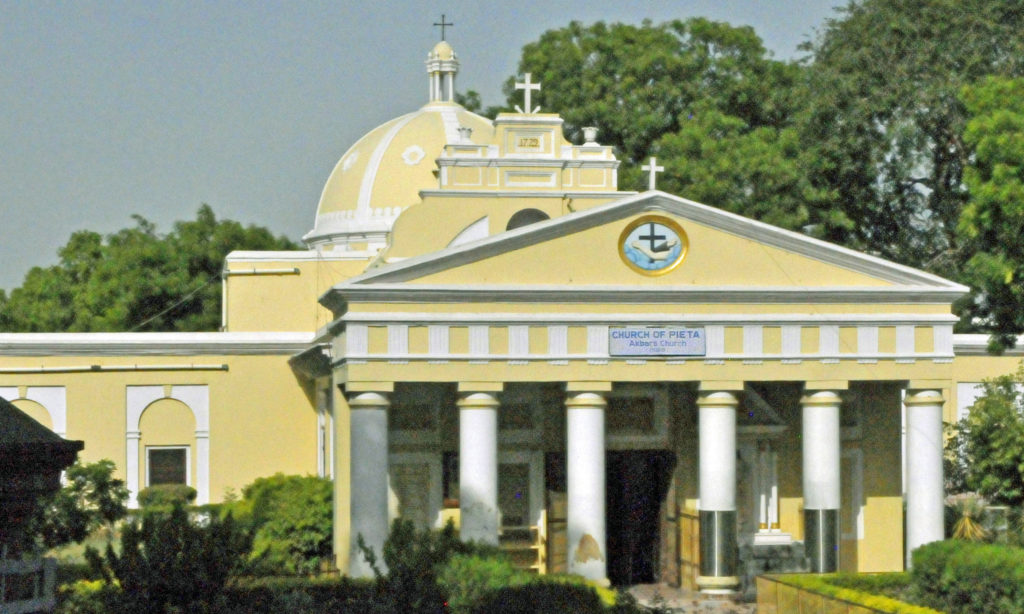
Agra, a city in northern India, is home to the Taj Mahal, built by Mughal Emperor Shah Jahan as a tomb for his favorite wife. Agra is also home to a Roman Catholic church named for Shah Jahan’s Sunni Muslim grandfather, Akbar the Great.
In about 1556, 14-year-old Akbar became the third Mughal Emperor. His empire eventually included much of northern and central India, with its capital initially in Agra. When Armenian Christians established a trading colony in Agra, Akbar, known for religious tolerance, asked Jesuits from Goa, a Portuguese colony in southwest India, to teach him about Christianity. Three priests reportedly made the 1000-mile trip to Akbar’s court in early 1580 and met with Akbar repeatedly during the next three years. Seeing Akbar’s openness to Christianity, more European Christians began settling in Agra. In 1598, Akbar built a church for Agra’s Christian community on land he owned near the Armenian colony. Akbar, one of whose wives was Christian, occasionally attended services in what became known as “Akbar’s Church.”
Jahangir, Akbar’s successor, expanded his father’s church and three of his nephews were baptized there. Shah Jahan, Jahangir’s son, became Mughal Emperor in 1628. During a war with the Portuguese, he captured some Jesuit priests and agreed to release them only after they had destroyed Akbar’s Church. A year later he reconsidered, pardoned the priests and rebuilt the church on its original site. Subsequent renovations and reconstructions resulted in the current church, which features French, Portuguese and Mughal architectural elements. Akbar’s Church remained the seat of Agra’s bishop until 1848, when it could no longer accommodate Agra’s Christians. The imposing Cathedral of the Immaculate Conception, which is adjacent to Akbar’s Church, replaced it. However, Akbar’s Church, also known as the “Church of the Pieta,” remains active and open to the public.